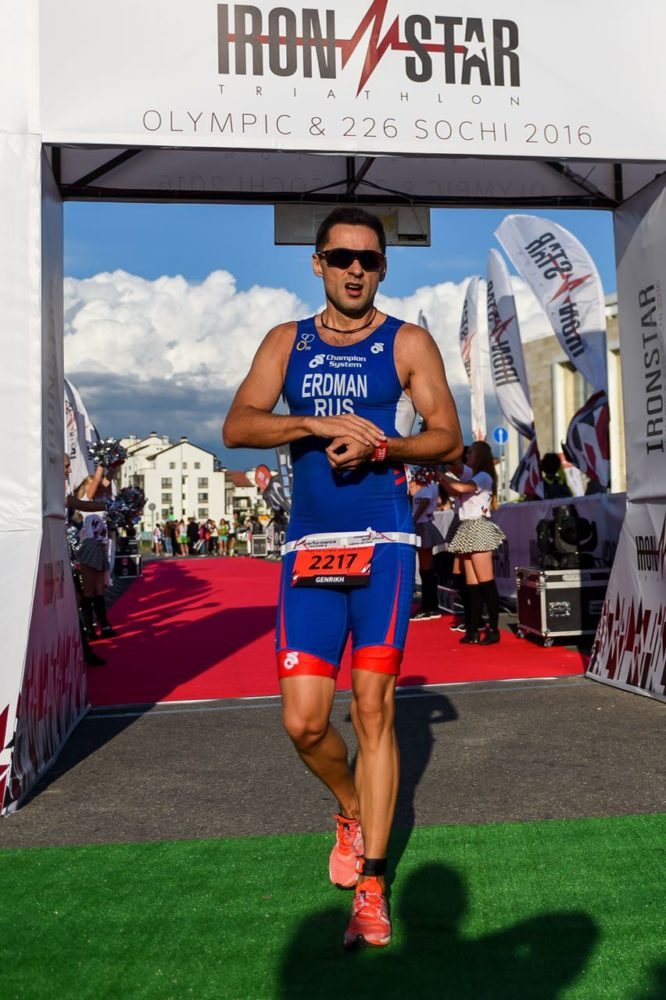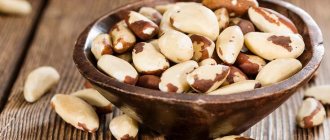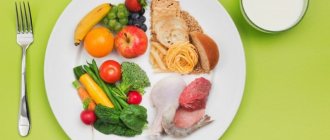Attempts to solve health or weight problems with some targeted changes in food are always doomed to failure. To understand why, just imagine a beauty in an expensive toilet and a diamond necklace, but in worn-out shoes, cheap makeup and dirt under her nails.
I’m sure that you somehow don’t... for the life of me... look like a beauty. In the same way, it is not possible to radically improve your health and lose weight if you simply give up a couple of some products and add a couple of others.
THE HIGH ART OF FOOD COMPOSITION
It’s the same with food: for your food to become your magic diet and health pill, you need to create a very balanced and very personalized diet.
It is not simple. Each of us, for example, should eat so much vegetable protein, so much animal protein, and omega-6, for example, so much. And remember at the same time that these “so many” are also tied to your weight, to the number of calories you consume. And the most disgusting thing is also the amount of some other food ingredients, with which this “so much” must certainly be in a certain balance. And all these numerous “so-and-so” also mutually influence each other. Sometimes it’s bad, sometimes it’s good.
I dedicate details of the influence of different products on health and their mutual influence on my delicious website https://moveat.expert/
Trying to depict this mutual influence on a diagram reminded me of an anecdote about a boy who, while trying to show with gestures where the exit from the maze was, broke his arm in five places. I was able to fit into this diagram only the most important connections and mutual influences.
To take into account all these mutual influences on your health, it is not at all necessary to sit with electronic scales and calorie tables. I will help you put together your ideal diet from the set of foods you eat.
For the calculation we use your data: weight-height-age, gender, physical activity. We take into account your goals (for example - to lose weight permanently or - to become a broad-shouldered, pumped-up, blue-eyed (oh!) blond). We make up the diet from those types of foods that you personally love, eat or - don’t eat (you tell me honestly - honestly describe your preferences in the Questionnaire).
AS A RESULT, YOU GET THIS “TABLE 1”
This particular one is designed for a lovely lady, 28 years old, height 164, weight 52, who wants to gently lose a few kilograms.
The table shows the product groups. For example, the “VEGETABLES” group includes a long list from carrots to zucchini and eggplant. This list is indicated in the Questionnaire.
We agree with you on the set and quantity of products by group And on this basis I calculate the most optimal quantity and ratio of products for 7 different options.
The weight of all products from each group together (for the whole day, not for one serving!!!) is indicated in the line “Weight of the finished product” in an orange frame. But you (God forbid) do not need to follow these weight numbers exactly. You just need to weigh it a couple of times and approximately remember that 40 g of nuts is so much in the palm of your hand, and 150 g of meat or fish is so much in a plate. And eat approximately the same amount of food per day (in your personal weight, of course).
Your daily diet is the part of the Table surrounded by a green frame. In it you see 7 options for combining different products FOR THE WHOLE DAY (from top to bottom). In each of the Options, the plus signs indicate the foods that you eat in this option. A plus sign means we eat, no plus sign means we don’t eat.
Each option is not one day. That is, option 1 is not Monday, and option 3 is not Wednesday. If you want, for example, to repeat option 3 2-3 times in one week, then this is possible.
HOW TO USE TABLE 1 TO CREATE YOUR DAILY MENU?
Simply and easily! Now you know exactly how many vegetables or, for example, fish or porridge you need to eat in a whole day. And to get your daily ration, you need to divide, for example, the weight of the entire daily serving of vegetables or porridge by the number of meals for which you plan to eat them.
It should be taken into account that you should eat about 30% of all food for breakfast, about 40% for lunch and 20-25% for dinner. It is recommended to eat some foods at the meal in which they are marked - entirely. For example, the entire daily portion of fish or meat. And some (like nuts, legumes, vegetables and fruits) can be divided into several parts for each meal, including snacks (if you snack, which is not necessary).
Well, it’s clear that in the recommendations we will tell you in detail how, how much and when to eat all the other foods that are included in your diet.
HOW TO ORDER A SIMPLE DIET CALCULATION:
It’s very simple: follow this link: Diet Calculation,” pay and then receive a special questionnaire. Fill it out and we will calculate your diet for you.
MENU FOR THE WEEK (WEEK SET)
And for those who do not want to deal with division and rule (over their diet), we offer a service for calculating the menu (diet) for the week. This diet is calculated according to your personal quantities and types of products based on data from Table 1. And the weekly diet looks something like this:
MENU FOR THE WEEK
HOW TO ORDER A DAILY RATIONAL CALCULATION:
It’s very simple: follow this link: “Calculating your diet with a layout for every day ,” pay and receive a special questionnaire. Fill it out - and we calculate your diet for you (Table 1) and write out the menu for you by day (Menu above).
TEST
And to make sure that everything is calculated correctly for you, we also provide a diagram of fats-proteins-carbohydrates and a calorie calculation table (below). They calculate how many calories, protein, fat, calories you will get from the selected amount of your favorite foods. Moreover, both for each specific day and on average for all 7 options (“summary option”).
These charts are only for monitoring the correct fat-protein-carbohydrate ratio in your diet.
These ratios (in% of total calories) should be as follows:
- fat 40 - 50%
- proteins 10 – 20%
- carbohydrates are all that remains after fats and proteins.
On the diagram you see the approximate amounts of fats-proteins-carbohydrates for each option and the summing calculation for the week.
And this plate shows how the ratios of the amounts of animal and vegetable protein and the calorie content of each option are observed.
It is clear that all calculations are approximate. After all, even the same product, purchased in different places and prepared differently, will contain different amounts of these same fats (fats, proteins and carbohydrates).
But our task is not to get a mathematically ideal diet, but to show you how much you personally need to eat different foods in order to provide yourself with everything you need in the best ratio.
And after that - teach you (your hands and eyes) the approximate amount of food per day. After weighing the food for a week, you will know that 50 g of seeds is approximately the same amount in the palm of your hand. And 150 g of boiled beans is that much in a plate, and 130 g of fish is approximately this much piece. And you need to eat this piece or handful with such and such an amount of salad or cooked vegetables, or porridge.
In general, from now on you can put an end to your doubts and painful thoughts.
Fill out a detailed questionnaire, receive your diet and, armed with your diet, boldly step into a bright future!
Floor
Proper nutrition depends on gender. We are not built the same, so nutrition should be selected taking into account gender differences. For example, women have a smaller set of muscle fibers than men. This means that we have different daily calorie needs:

- Women's energy needs are from 1500 kcal/day.
- Men's energy needs range from 2300-2400 kcal/day.
Calories are the energy we expend and get from food. When calculating calories, gender, type of activity and weight are taken into account. The more you weigh, the more calories you need. For example, you have an extra 10 kilograms of weight, and it’s the same as if you carry dumbbells with that weight. This means you spend more energy.
When drawing up a nutrition plan, we do not limit ourselves to just counting calories, but try to maintain the ratio of BZHU and calculate the individual needs for men and women for proteins, fats and carbohydrates.
When a man says he needs more meat, he's right

- Men's protein requirement is 2 g per 1 kg of weight.
- Women's protein requirement is 1 g per 1 kg of weight.
Let's say a man weighs 85 kg and leads an active lifestyle. We multiply his body weight by 2 g of protein and get 170 g of the daily requirement. In calories it is 680 kcal. In one meal, a man can consume up to 20 g of protein: this is contained in 3 eggs, 75 g of tuna, 100 g of chicken fillet.
However, you should not increase your meat consumption in order to gain muscle mass. Our body is able to absorb no more than 20 grams of protein food at one time. If you eat 30 grams in one sitting, then not only will it not be useful for future use, but it can harm the body.
Next we calculate the rest:
- A man's need for carbohydrates is 3-5 g per 1 kg of weight.
- Women's need for carbohydrates is 3 g per 1 kg of weight.
- A man's need for fat is 1 g per 1 kg of weight (no more than 100 g per day and no less than 50 g).
- Women's need for fat is 1 g per 1 kg of weight (no more than 100 g per day and no less than 50 g).
Energy value:
- Proteins 1 g – 4 kcal.
- Carbohydrates 1 g – 4 kcal.
- Fats 1 g – 9 kcal.
It turns out that our exemplary man, who weighs 85 kg, needs 2465 kcal per day, of which 170 g of protein, 85 g of fat, 225 g of carbohydrates.
the formula for calculating the needs for KBZHU for you , then use an online calculator.
Region of residence

Most people in our country live far from the equator, which results in a lack of vitamins and minerals. We are missing:
- vitamin D,
- iodine,
- iron (especially for women),
- magnesium and B6 (these elements work well together)
- folic acid,
- Selena,
- zinc,
- omega-3.
All these elements can be included in the diet as part of foods, as well as dietary supplements in therapeutic doses. This is especially true for those who have been feeling a lack of energy for 3 months, experiencing constant fatigue and stress. Frequent companions of vitamin deficiency are headaches and lack of desire to leave the house. When falling asleep, your body may twitch, as if you are falling somewhere, or you may experience spasms when walking, or your calves may cramp in your sleep. I will give a table that outlines the therapeutic norms of vitamins for adults.
Norms of vitamins and minerals for an adult
| vitamin D | 10 mg/day or 400 IU (ME) |
| B6 (only buy in combination with magnesium) | 2 mg |
| magnesium | 400 mg |
| iron | for men – 10 mg for women – 18 mg |
| zinc | 12 mg |
| iodine (you can buy iodized salt) | 150 mcg |
| selenium | 55 mg |
| folic acid | 40 mcg |
| omega-3 | 2 g |
Norms of physiological needs for energy and nutrients for various groups of the population (Methodological recommendations MP 2.3.1.2432 -08 of 2008)
Age
From a nutritional point of view, we distinguish three basic age periods : adolescence, adulthood and 45+. Their main difference is the unequal functioning of hormones and the gastrointestinal tract system. Depending on how calm our hormones are, we change our diet.
What is? For all ages, we must include in the diet:
- vegetables,
- whole grain,
- correct – polyunsaturated – fats (fish, avocados, nuts, some types of vegetable oils).
Recommendations by age

- Adolescence: 12-18 years. Focus on proteins. This is a building material necessary for a growing organism. Also, don’t forget about slow carbohydrates (mainly cereals), which provide energy for an active life. We follow the right fats (preferably from fish), as they help normalize hormonal levels.
- Adult period: from 18 to 45 years. This is a fairly calm period hormonally. Therefore, in nutrition it is important to maintain a balance of dietary fat and follow the golden rule “everything is good in moderation.”
The classic BJU ratio in percentage is 30/20/50.
- 50% – carbohydrates (40% should be slow, 10% – fast).
- 30% - proteins.
- 20% are healthy fats (15% are healthy fats, 5% are the rest).
Depending on your lifestyle, you can slightly shift the percentage, but this should be done after consulting with a nutritionist.
- 45+ - a special period in a person’s life. Here again, hormonal changes in the body occur in both women and men. After 45 years, it is very important to focus on proper nutrition, including healthy polyunsaturated fats, which help control hormonal changes.
Exercise stress
Physical activity is the factor that determines the quantity and quality of your diet. People with a sedentary lifestyle cannot be put on the same level as those who are active every day. So, how much food do people with different daily routines need?
- People with a sedentary lifestyle: at least 3 nutritious meals per day.
- For those who have periodic training: 3 meals + snack.
- People who are physically active during the day and have a standing job: 3 meals + two snacks.
As a snack, I recommend, for example, a sandwich made from whole grain bread with cottage cheese and avocado.
What do you need to know to create a meal plan?
To give you an idea, endurance nutrition comes in two types: race nutrition and DNF nutrition. These are 2 different types of food))
It is important for us that you understand: “there are no magic pills.” There is no effective nutrition plan that looks like this: “Eat 1 gel every 15 minutes, wash it down with isotonic water and bars.” You will have to make your own plan. And our task is to help and give you everything to understand how to do this most correctly. So, let's start!
To properly plan your nutrition plan, you need to first take into account 2 parameters: the ambient temperature at the race and the time in which you plan to complete the distance. The hotter the weather, the more fluid you will need during the race, and the faster your pace, the more glycogen you will burn instead of fat. The answer to these 2 questions will determine the ratio of calories and fluids that you will need to consume to successfully complete the race.
Remember 2 numbers: 380 and 260. This is how many calories the body can absorb on average under load in 1 hour on a bike and running, respectively. All other calories will be useless at best, but more often than not they will “ask to come out” during the race. Therefore, blue and yellow booths are very popular at a distance and often have a queue.

Matt Hanson – First Endurance PRO Athlete
CALORIES
- The main mistake is trying to make up all the calories expended during the race from the food you take with you, which is why you often see athletes riding and running next to each other, hung with gels and bars like a “Christmas tree”. During training and racing, you need to focus on replenishing the glycogen your body uses. Glycogen is your stored carbohydrates and typically an athlete will have about 2-2.5 hours worth of glycogen in their muscles and liver. Regardless of whether you eat maltodextrin or protein during the race, your body will still convert it into glucose for energy.
Over the course of the race, the body will use a combination of carbohydrates and fats. At a slow pace it is mainly fats; closer to your aerobic threshold, it will be carbohydrates. Knowing this will help you understand how much you need to replenish. If you need to know calories exactly, then it is better to take a special test for the use of substrates.
A) Slow means you are primarily burning fat and therefore don't need to replace too many carbohydrates. For a 70kg athlete, this may mean only needing to replace 50-100 calories per hour.
B) At a faster pace, you burn more glycogen and therefore must replace it. For an athlete weighing 70 kg, this may already mean 250-350 calories per hour. Do not forget that under load, regardless of your weight, the body will not be able to absorb more than 350-400 calories per hour, and in fact it will spend 600-800 kcal/hour. He will always take this difference from his own glycogen or from fats. But during competition, consumption will mainly come from glycogen, since athletes at competitions strive to show the maximum of what they have been preparing for for a long time.
- Let us remind you that the body contains glycogen for 2-2.5 hours of work. Once you deplete this supply, you will slow down. You can be compared to a 6-cylinder engine from which 5 spark plugs have been removed. In fact, when your stored glycogen becomes low, your body's performance begins to suffer. You must replace the calories from the carbohydrates you use to maintain a high level of performance. Replenishing these calories quickly and systematically means your body will NOT need to use stored glycogen.
HYDRATION – FLUIDS REPLACEMENT
Remember that your body in hot conditions will most likely become dehydrated first before you begin to experience nutritional problems. Since nutrient absorption will be greatly impaired if it does not occur with the correct amount of fluid, focusing on hydration first and calories second is paramount. In extremely hot long training sessions and races, it is possible that you will need to drink 1-1.5 liters per hour to maintain effective hydration levels, although 600-700 ml may be sufficient for many.
In particular, you should pay attention to how much you sweat in hot weather. In very dry places (e.g. Arizona, Utah, Australia, South Africa), sweat can evaporate instantly, and athletes need to closely monitor its levels. Often in these conditions, the rate of sweating is so high that you don't even notice the moisture on your skin. In hot conditions, hydration (water and electrolyte intake) exceeds calorie intake. This doesn't mean that calories aren't important, but consuming them without a proper hydration strategy can spell disaster. First analyze your hydration level and then add the total number of calories you can consume at that particular level.
Sweat is your body's tool to cool itself down in hot conditions. In fact, the more you exercise, the more efficient you become at sweating and cooling. If you have a high sweat rate, this is a sign that you are well cooled. As you might expect, maintaining the high sweat rate you require in hot conditions requires a significant amount of fluid. A 1% drop in fluid levels causes your heart rate to increase to maintain an adequate sweat rate, which is not what an athlete wants during training and racing.
Proper hydration is critical to performance in high temperature conditions. Even mild dehydration can make it difficult to absorb calories, so we recommend that your meal plan takes hydration levels into account for it to be effective.
The First Endurance race and training nutrition system is based on the use of two main products: EFS Liquid Shot and EFS Drink.
Our Electrolyte and Energy System EFS Drink and EFS Liquid Shots use a combination of maltodextrin, sucrose and glucose, all of which are high glycemic. All three sources are absorbed very quickly, so your working muscles get their carbohydrates from an external source (through digestion) instead of using your stored glycogen. This means that you will continue to receive energy during a race lasting from 1 to 30 hours without “hacking” your glycogen stores. Slow-digesting foods and carbohydrates are the real reason you're stalling in the race.
When you start using slow-digesting foods (candy bars, bananas, etc. solid foods) and low glycemic index carbohydrates, your body immediately begins to use your stored glycogen, which means that the body must begin to use stored glycogen stores. This is COMPLETELY wrong! It is also important to understand that maltodextrin is a high-glycemic carbohydrate and is highly absorbable. But it is the use of multiple high-glycemic carbohydrate sources (EFS Liquid uses 3 sources) that is critical, since carbohydrates are absorbed in different areas of the digestive system. Consuming three sources at one time means that you can absorb all three at the same time in different areas of the digestive system. This results in the ability to consume more carbohydrates per hour with less strain on the stomach.
How to properly combine EFS Drink and EFS Liquid Shot at a race?
EFS Liquid Shot has been developed for use in combination with the EFS Drink Electrolyte Complex. We recommend using EFS as a source for the first 200 calories per hour, and EFS Liquid Shot for subsequent calorie shortfalls. Therefore, for long races where an athlete may require 350 calories per hour, it is ideal to use 200 calories of EFS and 150 calories of EFS Liquid Shot.
EFS Liquid Shot is ideal when you need more calories than you can get from regular EFS. Not recommended as a primary or sole source of calories in hot conditions, but works well as a primary source of electrolytes and calories in cold weather.
It's also important to note that EFS contains 1,160 mg of electrolytes (sodium (Na+), potassium (K+), chloride (Cl-), calcium (Ca++) and magnesium (Mg++)) per serving, more than any other isotonic drink on the market. Additionally, EFS Liquid Shot contains over 1,500 mg of electrolytes per flask. Therefore, if an athlete uses more calories per hour, they will also receive additional electrolytes per hour. This was done intentionally to eliminate the need for salt tablets and pops. With the combination of EFS Drink and EFS Liquid Shot, you can train and race with confidence, knowing you don't have to worry about cramps or dehydration.
It is important to know (especially for triathletes and cyclists) that EFS Liquid Shot is completely soluble in cold water, unlike regular gels. It can be easily poured into a cycling flask and topped up with water to meet your calorie needs. This is great for long distance bike racing. Many of the professional triathletes and cyclists we work with use this exact nutrition system.
How to use PreRace on your half
PreRace is a strong and effective stimulant of the nervous system, which helps the athlete, against the background of fatigue, to feel combat-ready and not lose clarity of consciousness. Its components are built on two principles: cascade, i.e. when the effect of one ingredient ends, another begins to act, as well as the synergistic principle - the effect of one component is enhanced by the effect of the other. This combination allows the athlete to feel clarity of consciousness, a surge of vivacity and energy, enhances the functioning of the central nervous system receptors against the background of fatigue and works for 1.5-2 hours without causing a rapid heartbeat, unlike taking caffeine.

Heinrich Erdman – amateur triathlete
FOOD PLAN IRONMAN 70.3 and IRONSTAR Kazan
We assume that at this time of year in Sochi and other summer races the temperature is on average 30 degrees (at higher temperatures the amount of fluid consumed will increase to 1000-1200 ml per hour, but the number of calories that the body is able to absorb will remain the same). Have you learned this?
So, you need the following.
- Cycling stage: minimum 800 ml/hour of liquid with diluted EFS Drink. This will replenish 200 calories. The remaining amount is 150 calories/hour from EFS Liquid Shot. In total, during the cycling stage you will need only 5-7 servings of EFS Drink + 1 flask of EFS Liquid Shot.
- During the running phase, 1 flask of EFS Liquid Shot + PreRace, as well as cola or other carbohydrate drink (Sprite, Fanta, RedBull, etc.). Or 2 EFS Liquid Shot flasks without the use of additional power at the points.
- Remember to stay hydrated on the run at every nutrition station. Use ice for cooling (back of the head, parietal area, groin, armpits).
- Immediately after the finish, drink the Ultragen recovery cocktail.
- Eat strictly according to plan. A nutritional mistake will cost you your race results and the time you spend preparing for the race.
TIP: For the race, plan your nutrition based on the need to replace 350 calories per hour on the bike and 270 on the run, since you will most likely be in the aerobic zone and above during the race. Therefore, in long races where an athlete may require 350 calories per hour, it is ideal to use 200 calories from EFS and 150 calories from EFS Liquid Shot.
Swim TIP: Before heading to the starting line, drink 1/2 a flask of EFS Liqud Shot. The body must be constantly in a “nourished” state before the race. Don't forget: your body will burn more calories during the race than it can absorb from the food you take with you.
Cycling TIP: Professional and advanced athletes eat only liquid nutrition during the race. The time for completing the distance is planned in advance. At the cycling stage, it is diluted in concentrated form in a cycling flask. And then they add it to the drinker on the steering wheel in front of the food station. Then at the PP they take only clean water and add it completely to the drinking bowl. This way they get a ready-made nutritional mixture for a certain period of the race. This allows you not to carry extra cargo with you and not waste time on food (you just drink it from a tube on the steering wheel. It’s very convenient). EFS Drink and EFS Liquid Shot make it easy to create your own combination.
TIP for running: When running, the number of calories absorbed will decrease to 250-280 per hour. For the entire running stage, you will only need 1.5 EFS Liqud Shot, which easily fits into the back pocket of your race suit or waist bag. Advanced athletes carry it in their hand. At first glance, this will seem inconvenient, but after the 3-4th workout you will understand how convenient and effective it is than a regular gel in a tube. Add 1 serving of PreRace powder to an EFS Liquid Shot.
ADVICE: LIQUID FOOD ONLY. Avoid any solid foods during the race, including candy bars, bananas, etc. During physical activity, the walls of the stomach spasm, which significantly affects the functions of the digestive system - it simply slows down. Therefore, any “solid” food eaten at a distance lies in the stomach, is slowly digested and draws blood circulation to the digestive system, instead of providing the muscular and respiratory systems of the body with nutrients and blood.
Ironman 70.3 Nutrition Plan by Tim Dawn - Ironman Record Breaker HERE
What to eat for dinner?
The optimal time for dinner is 3 hours before bedtime. Desired calorie intake is 20% of the total daily intake.
Weight Control drink (apple-lemon)
Attention! In the evening, insulin levels rise, so you can’t eat simple carbohydrates - they will immediately turn into fat. The ideal option is light protein foods and vegetables.
Sleeping is more pleasant and healthier on an empty stomach. But if you feel strong physiological hunger, do not torture yourself - drink a glass of low-fat kefir or warm milk.
What should breakfast be like?
During breakfast you need to consume 25% of your daily calories. If you skip it, your blood glucose level will drop significantly, which will lead to “carbohydrate” hunger - a craving for sweets and flour products.
Even if you can resist an eclair or a donut, you'll likely overeat at lunch or won't be able to resist heading to the refrigerator at night. Moreover, it makes no sense to limit yourself to food in the morning: it will be completely absorbed, and the energy generated from it will be wasted.
Fitness kozinak (cranberry-beetroot)
Suitable dishes include whole grain cereals, cheeses, omelettes, and nuts. Sandwiches with sausage are unlikely to provide the body with energy and certainly will not bring health benefits.
I want to change my diet. Where should I start?

I recommend starting a food journal . What is it and what is it for? We do many things automatically, without even noticing it. We put some food in our mouths to satisfy the feeling of hunger, and sometimes just to keep ourselves busy with something. Imagine: you are talking with a colleague during a break and, as if by chance, take a caramel out of your pocket and eat it. It seems like nothing special. Big deal. And for the body this is a whole event. At first it is joyful - because he has received a new portion of glucose, and then he begins to feel a loss of strength and asks for more. A bag of hard candies in your pocket is a bad habit that can put you on a carbohydrate swing.
A food diary will help you keep track of all your meals and begin to treat them consciously. In my practice there were people who wanted to lose weight. And during the day they followed a food regime, and before going to bed they ate to their fill. With the help of a food diary, they were able to identify the problem and cope with it.
Food journaling apps
You can keep a food diary either in a regular notebook or in xls on your computer. I recommend doing this using special applications on your smartphone. You always have your phone at your fingertips, so you won't miss anything.
Please note the following applications. You can start by using the free versions, they will be enough for your tasks.
- FatSecret Calorie Counter /
- Calorie counter and food diary from YAZIO /
- Arise - weight loss app
Important: when registering in the application, in the “your goal” section, indicate not “weight loss”, but “maintenance”. Otherwise, the parameters of the KBZHU will be greatly underestimated. And when you bring your body back to normal, and the weight stays the same for more than a month, then you can change the goal to “losing weight.”
I have a special online course “Basics of Nutrition” for those who want to lose weight. On it I teach how to create an individual algorithm taking into account your individual characteristics. Over the course of a week, we analyze what exactly you eat. From the very beginning, I have focused on quality food. “Radical” fasting can promote weight gain. You will gain “fat” even from kefir, since the body will be under stress. It is important to eat quality food and move to a new level of awareness.
Find out more about the course











